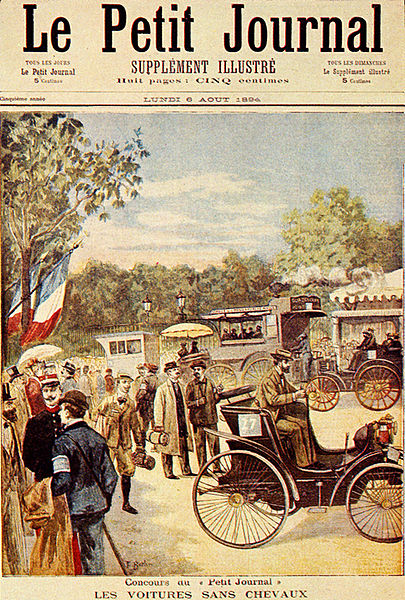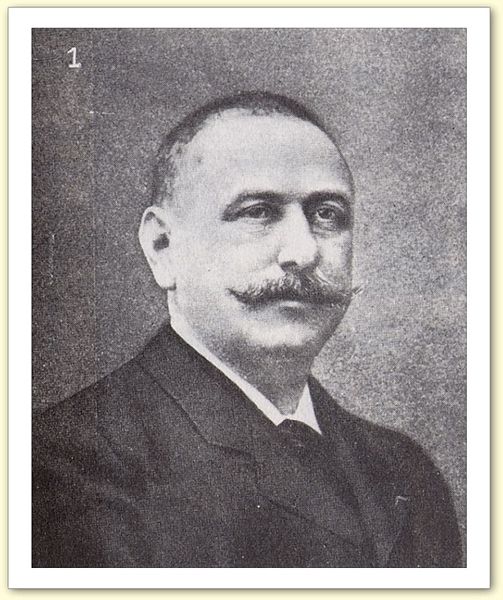The Paris–Bordeaux–Paris Trail race of June 1895 is sometimes called the "first motor race", although it did not fit modern competition where the fastest is the winner. It was a win for Émile Levassor, who came first after completing the 1,178km race in 48 hours, almost six hours before second place. However, the official winner was Paul Koechlin, who finished third in his Peugeot, exactly 11 hours slower than Levassor, but the official race regulations had been established for four-seater cars, while Levassor and runner-up Louis Rigoulot were driving two-seater cars.
Paris–Bordeaux–Paris
Paris–Rouen, Le Petit Journal Horseless Carriages Contest, was a pioneering city-to-city motoring competition in 1894 which is sometimes described as the world's first competitive motor race.
Paris–Rouen (motor race)
Jules-Albert de Dion finished first in a steam powered De Dion tractor towing a caléche carriage, but was not eligible for the prize. Among the passengers are de Dion, Étienne van Zuylen van Nyevelt-Rothschild, and writer Émile Driant.
Albert Lemaître (pictured on left) finished second in a 3 hp Peugeot but was judged the winner. Bicycle and tyre manufacturer Adolphe Clément-Bayard was the front passenger.
Pierre Giffard





